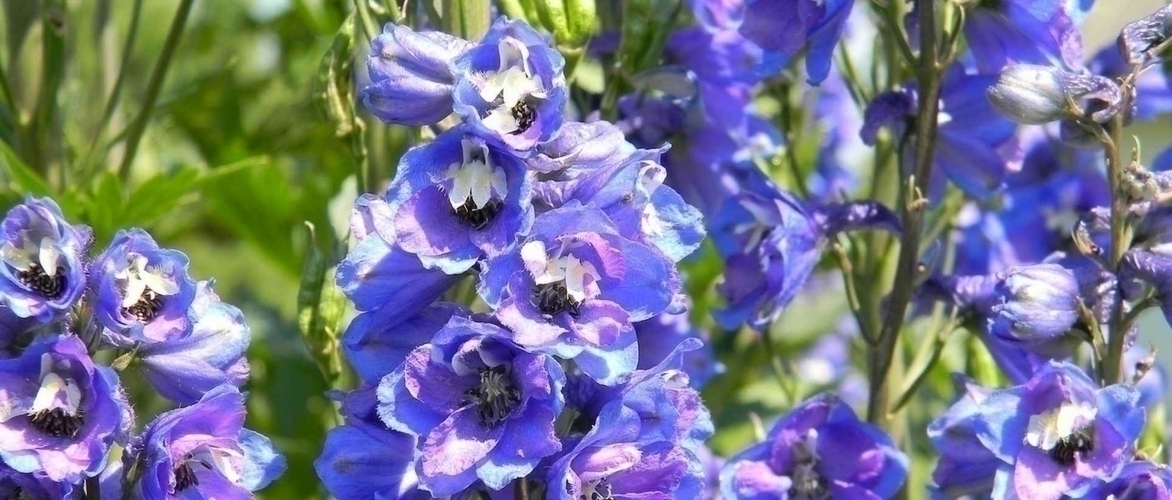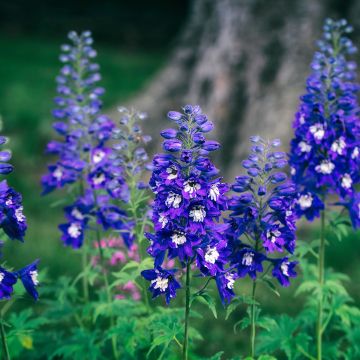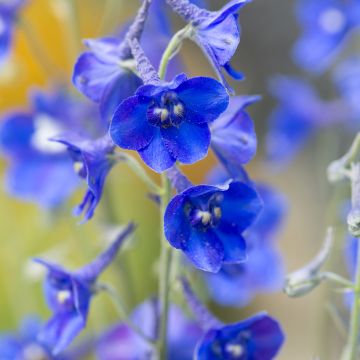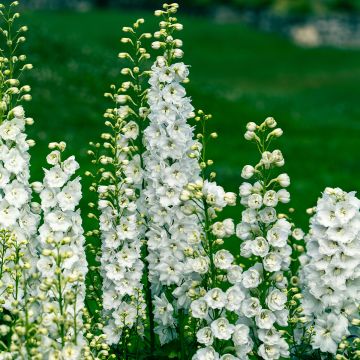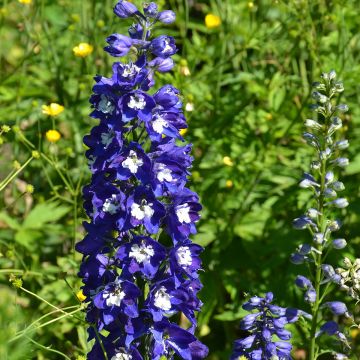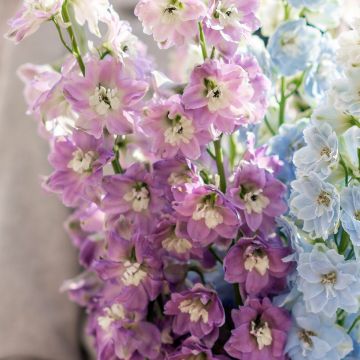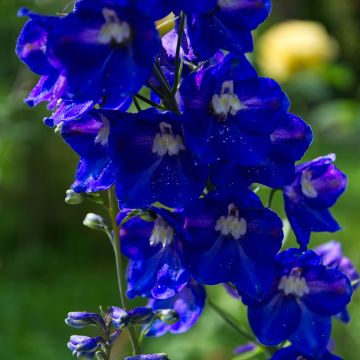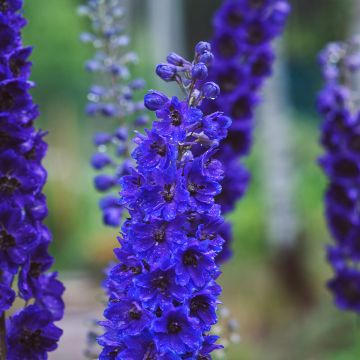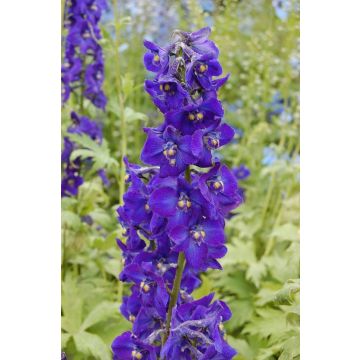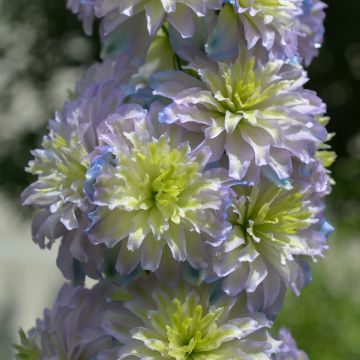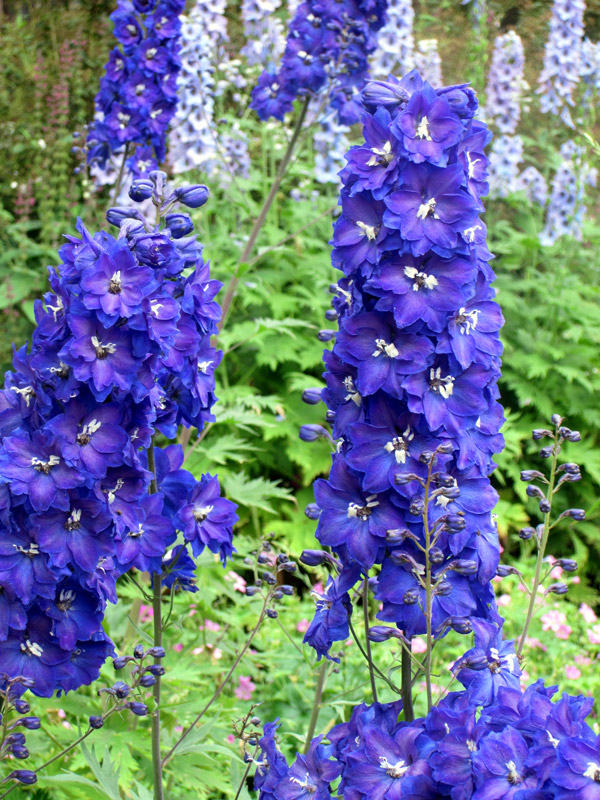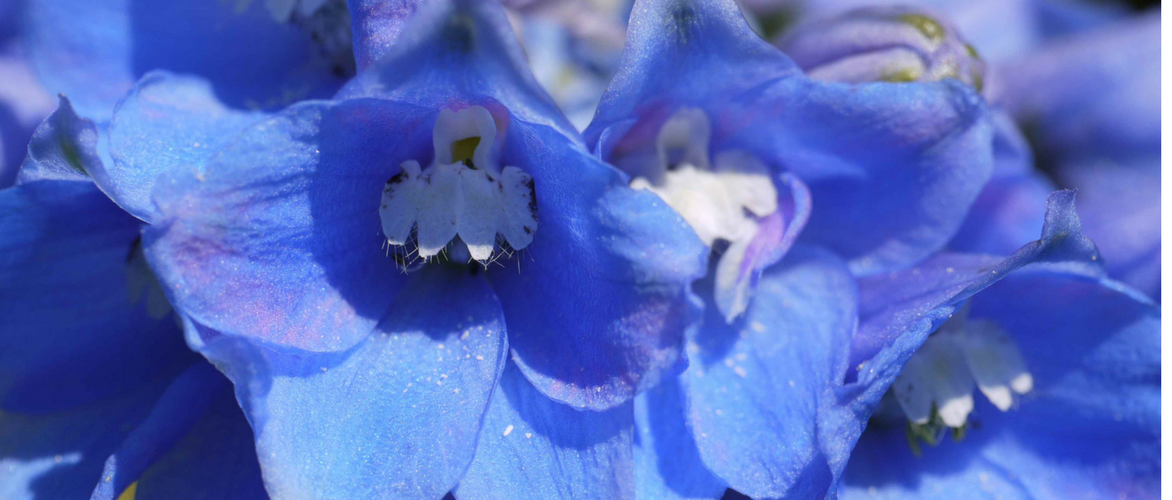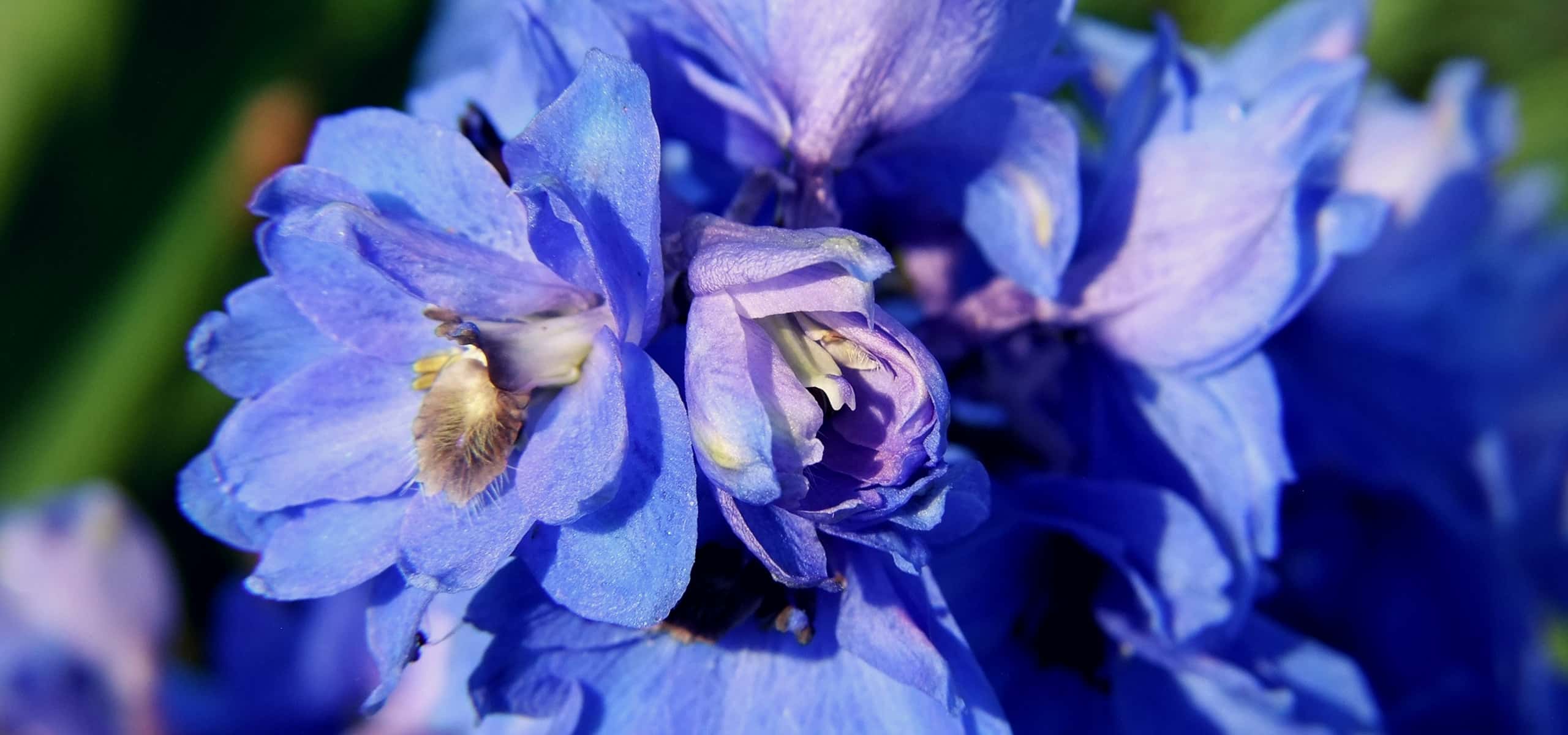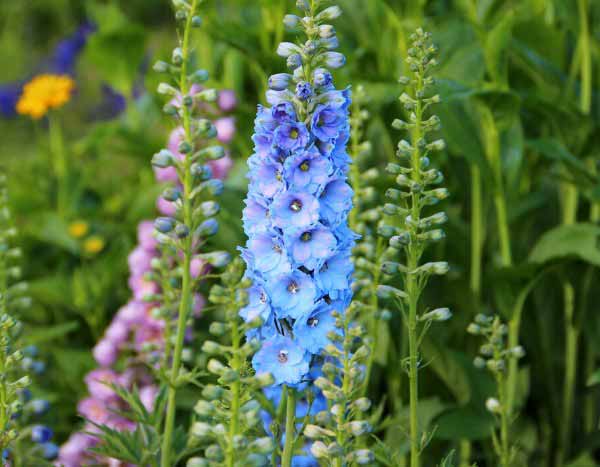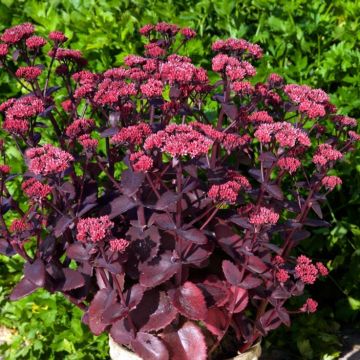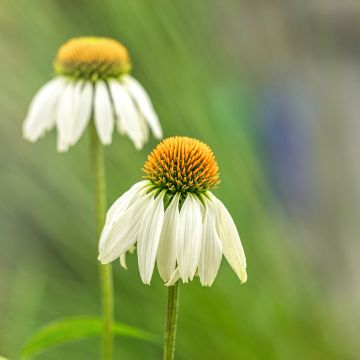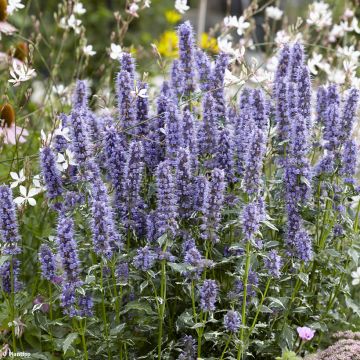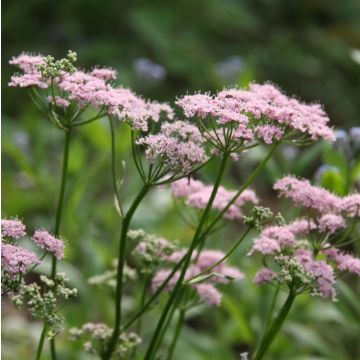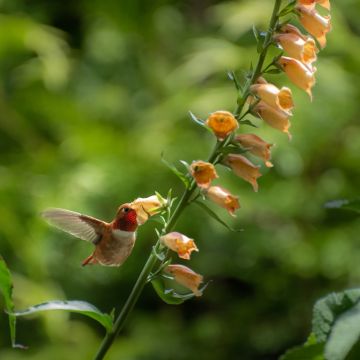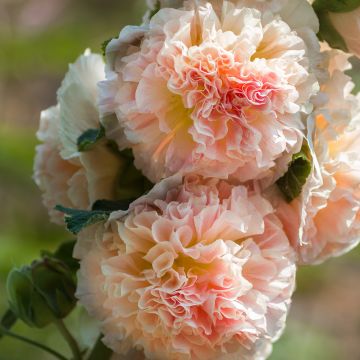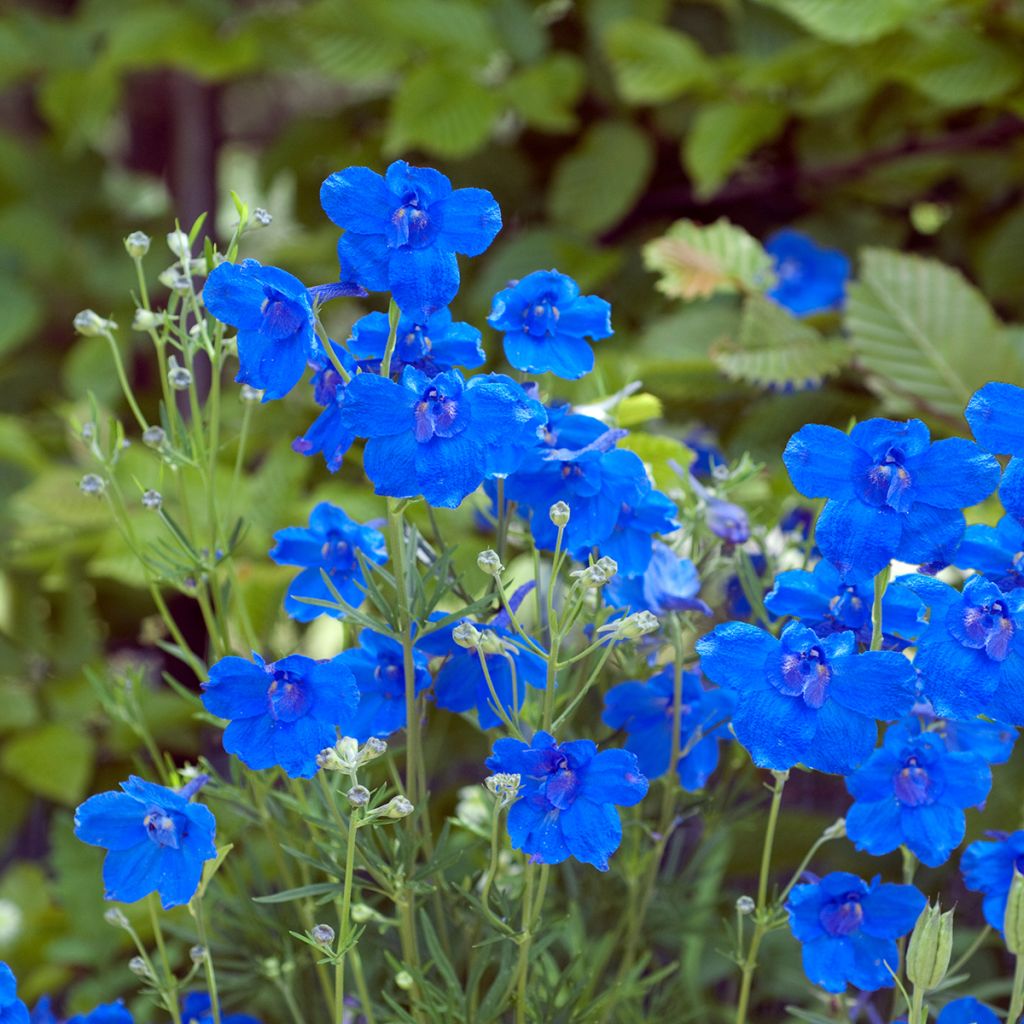

Delphinium grandiflorum Blauer Zwerg - Larkspur
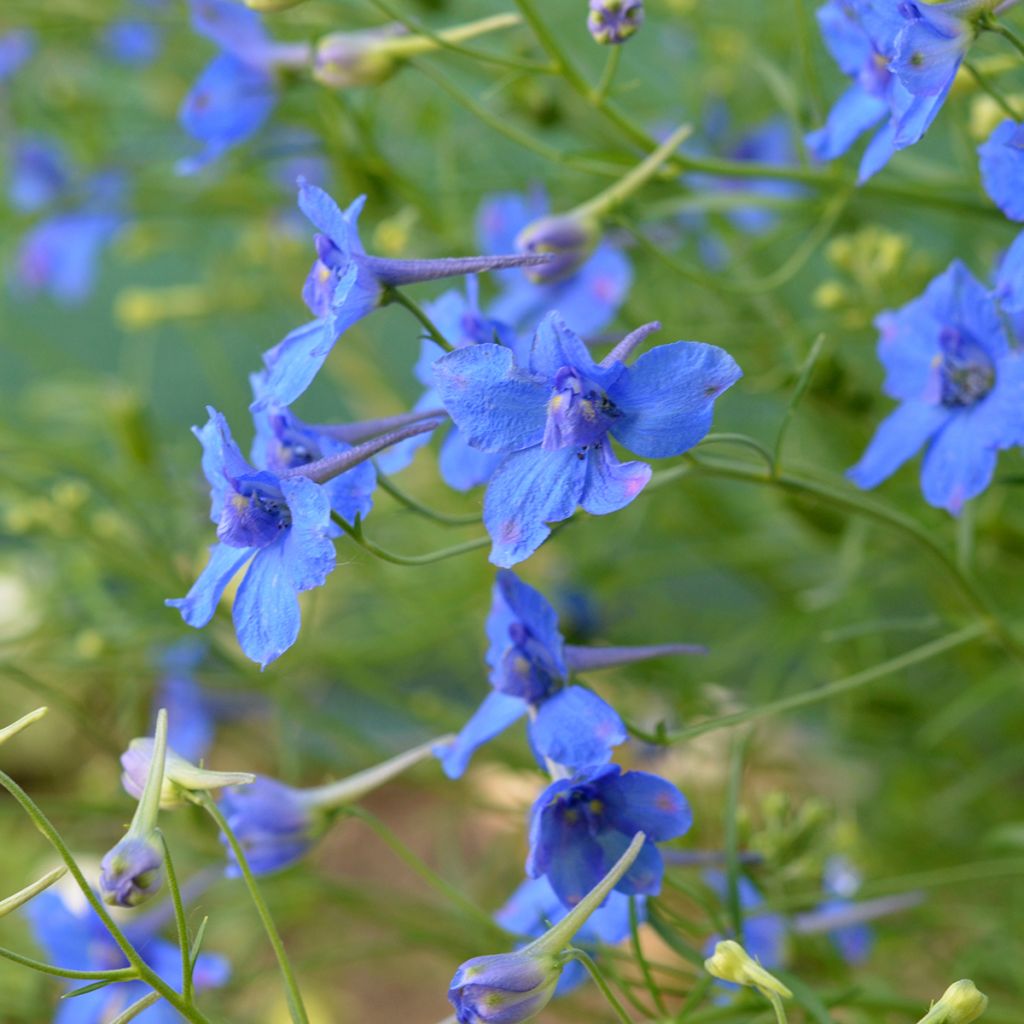

Delphinium grandiflorum Blauer Zwerg - Larkspur
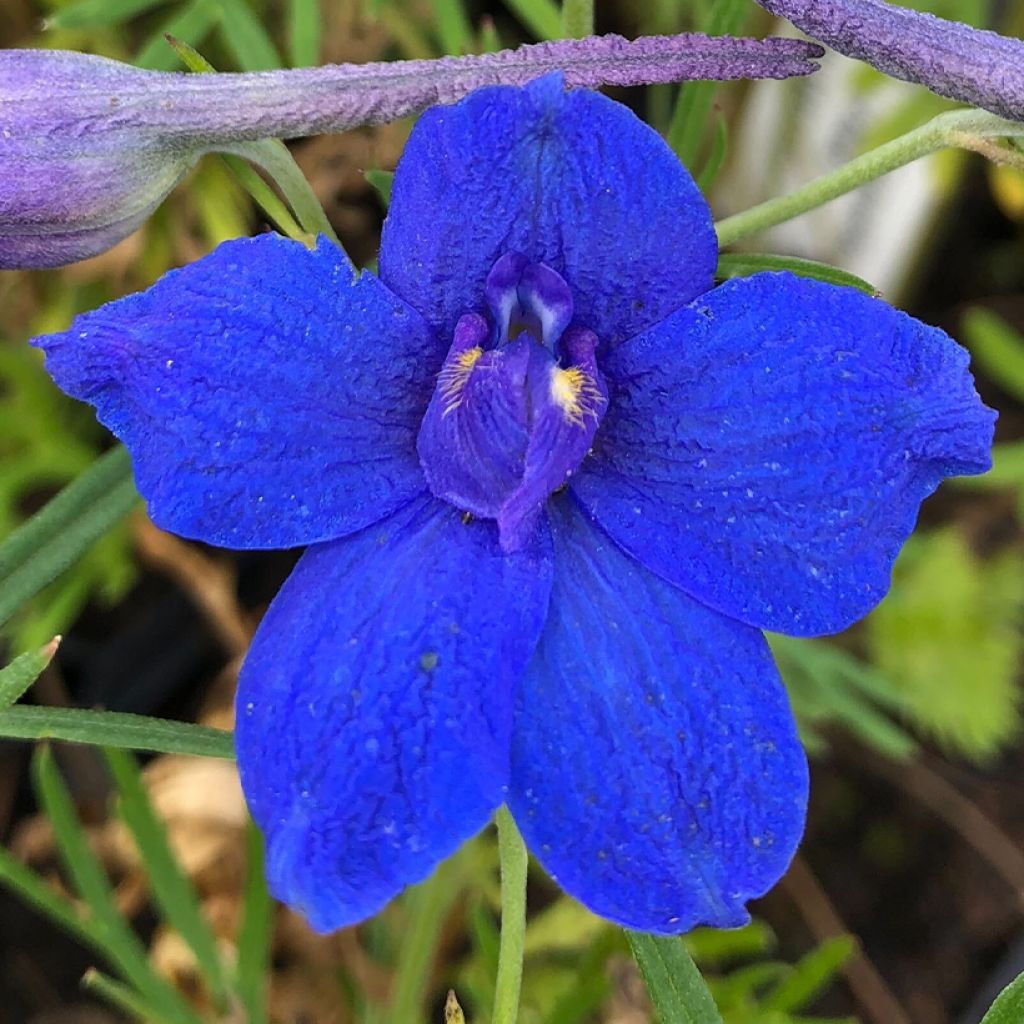

Delphinium grandiflorum Blauer Zwerg - Larkspur
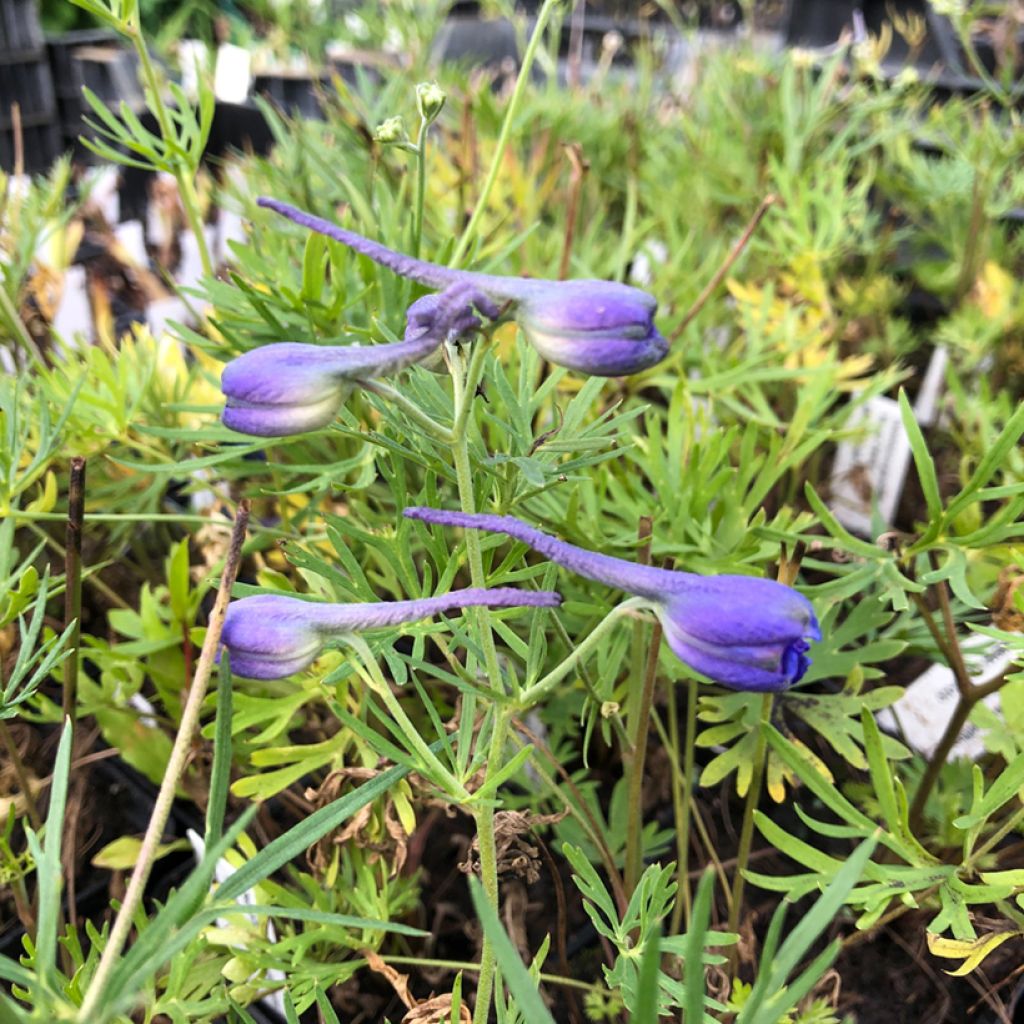

Delphinium grandiflorum Blauer Zwerg - Larkspur
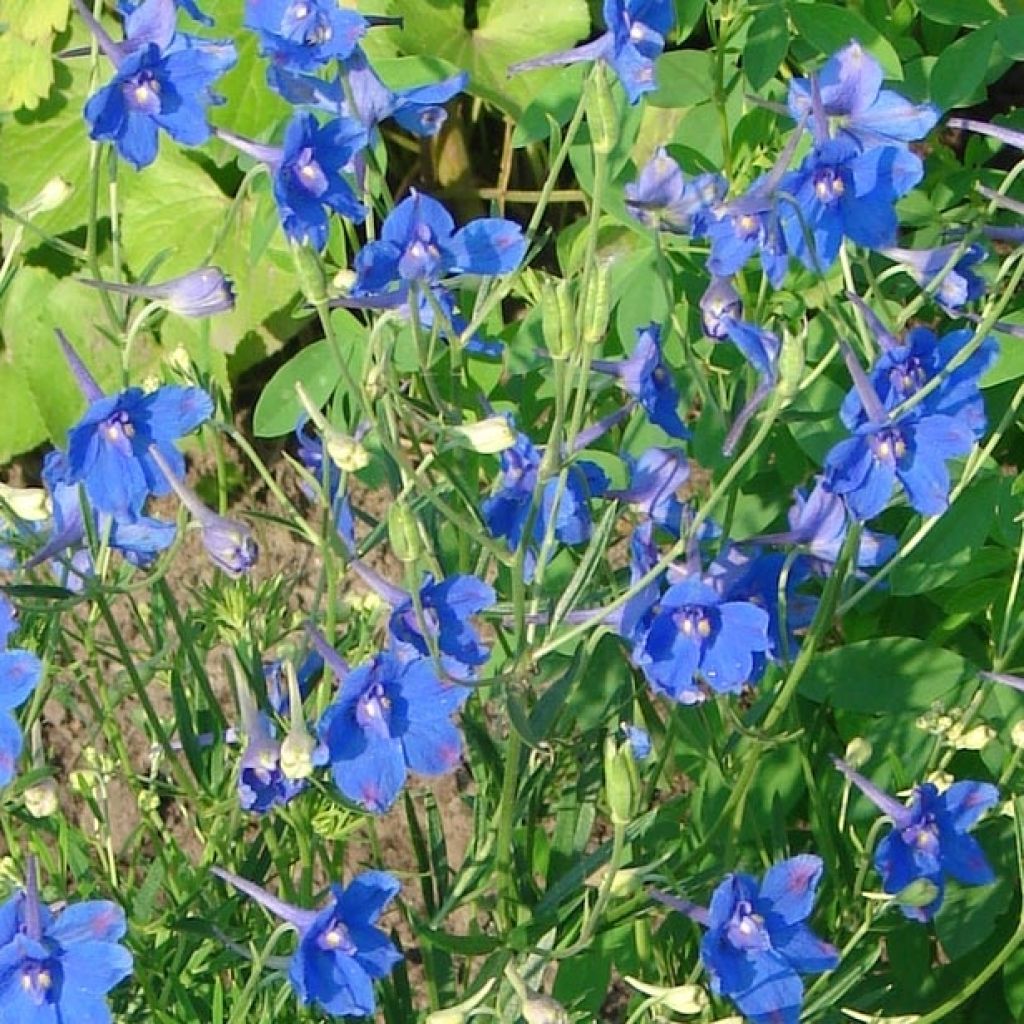

Delphinium grandiflorum Blauer Zwerg - Larkspur
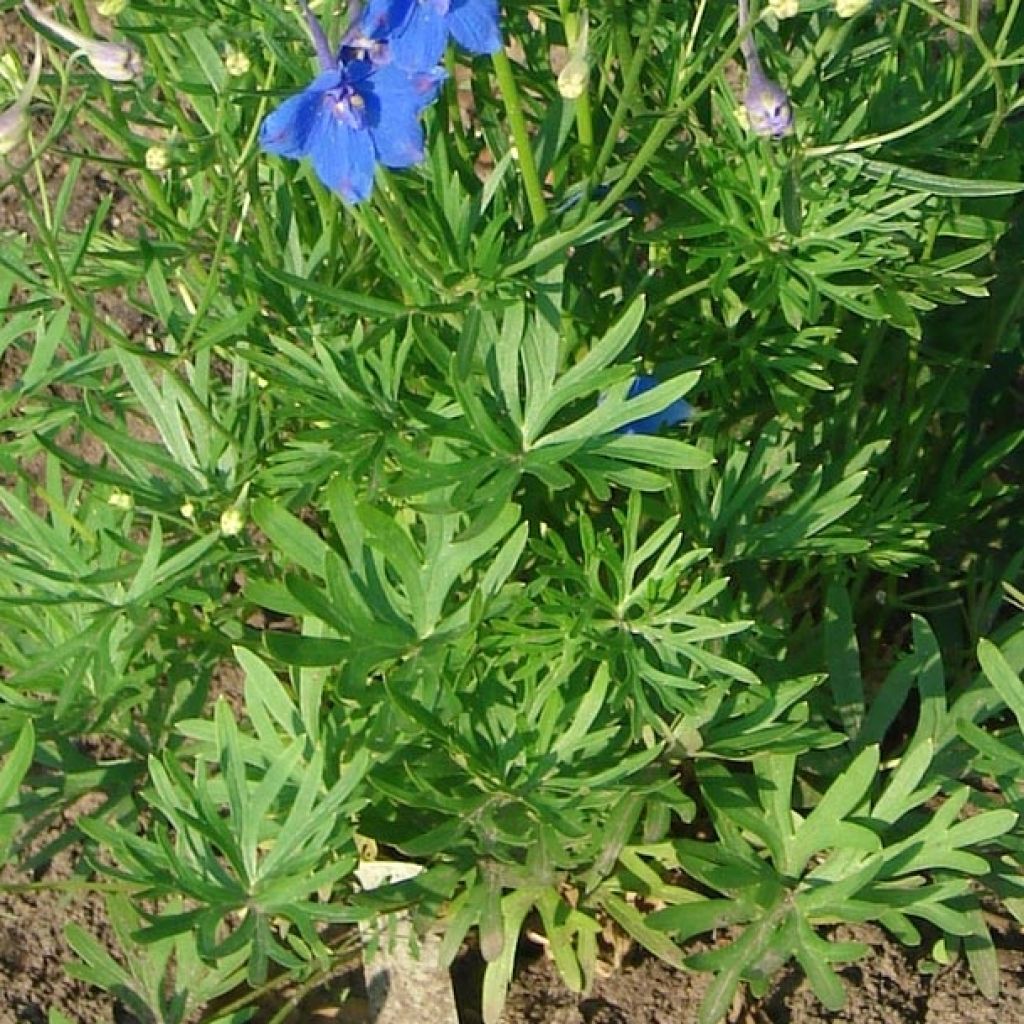

Delphinium grandiflorum Blauer Zwerg - Larkspur
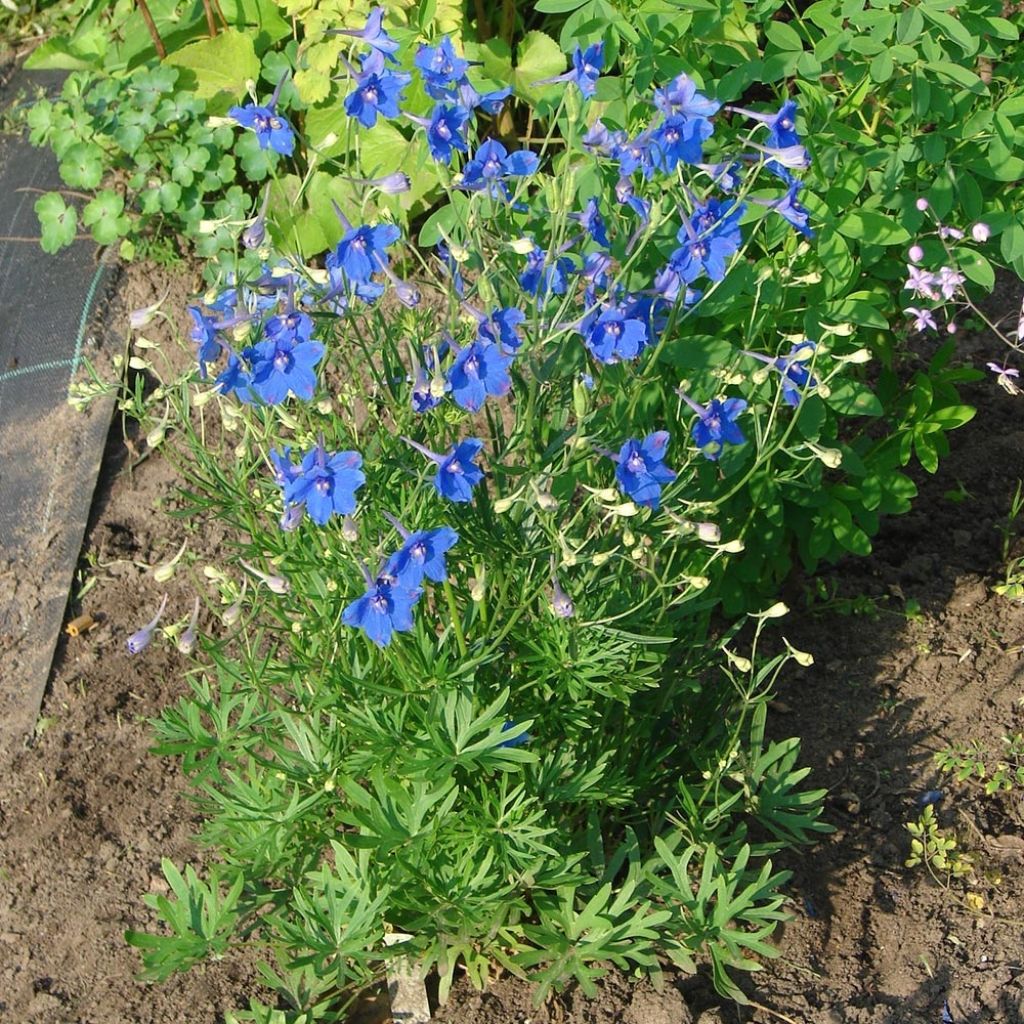

Delphinium grandiflorum Blauer Zwerg - Larkspur
Delphinium grandiflorum Blauer Zwerg - Larkspur
Delphinium grandiflorum Blauer Zwerg
Siberian Larkspur, Chinese Delphinium
Perfect this time! Flowered until autumn!! Thank you ;)
marianne, 29/11/2025
Special offer!
Receive a €20 voucher for any order over €90 (excluding delivery costs, credit notes, and plastic-free options)!
1- Add your favorite plants to your cart.
2- Once you have reached €90, confirm your order (you can even choose the delivery date!).
3- As soon as your order is shipped, you will receive an email containing your voucher code, valid for 3 months (90 days).
Your voucher is unique and can only be used once, for any order with a minimum value of €20, excluding delivery costs.
Can be combined with other current offers, non-divisible and non-refundable.
Home or relay delivery (depending on size and destination)
Schedule delivery date,
and select date in basket
This plant carries a 12 months recovery warranty
More information
We guarantee the quality of our plants for a full growing cycle, and will replace at our expense any plant that fails to recover under normal climatic and planting conditions.
Would this plant suit my garden?
Set up your Plantfit profile →
Description
Another way to appreciate delphiniums. Less spectacular, shorter, but also easier to grow, Dephinium grandiflorum 'Blauer Zwerg' is a bushy variety with light spikes of single, bright gentian blue flowers in June-July. This smaller variety has very finely cut light green leaves that enhance its intense colour. Easy to grow in moist and humus-rich soil, this perennial larkspur is also more resistant to diseases and parasites.
Delphinium Blauer Zwerg is a plant of the Ranunculaceae family belonging to a group of perennial varieties derived from Delphinium grandiflorum, also called Chinese Delphinium, native to Russia, Mongolia, Japan and China. Blauer Zwerg is distinguished by its gentian blue colour and a bushy, compact shape that does not exceed 25 cm (10in), which means it doesn't need staking. Slender floral stems emerge from a tuft of large palmate leaves finely divided into strips, in June-July. This variety produces branched spikes, 15 cm (6in) long, adorned with 3 to 4 cm (1 to 2in) diameter, graceful, light flowers composed of 5 petaloid sepals, the upper one being prolonged by a delicately indented spur. The plant develops from a woody rhizome that sinks into the soil.
Delphiniums are floriferous herbaceous perennials, always noticeable in a garden. Delphinium grandiflorum allows you to appreciate these plants in a different way by living for several years. Their characteristic silhouette always adds colour, and charm and lightness to perennial beds. They are good companions for moss or gallica roses, with which they form charming and romantic scenes. You can create a beautiful combination with soft orange daylilies and gypsophila Rosenschleier. The 'Blauer Zwerg' variety is also suitable for flower pots. Its flowers hold up well in bouquets.
Note: From March to September, the stems of our delphiniums are cut short to allow better branching and achieve optimal rooting. This also prevents the stems from breaking during transport.
Delphinium grandiflorum Blauer Zwerg - Larkspur in pictures
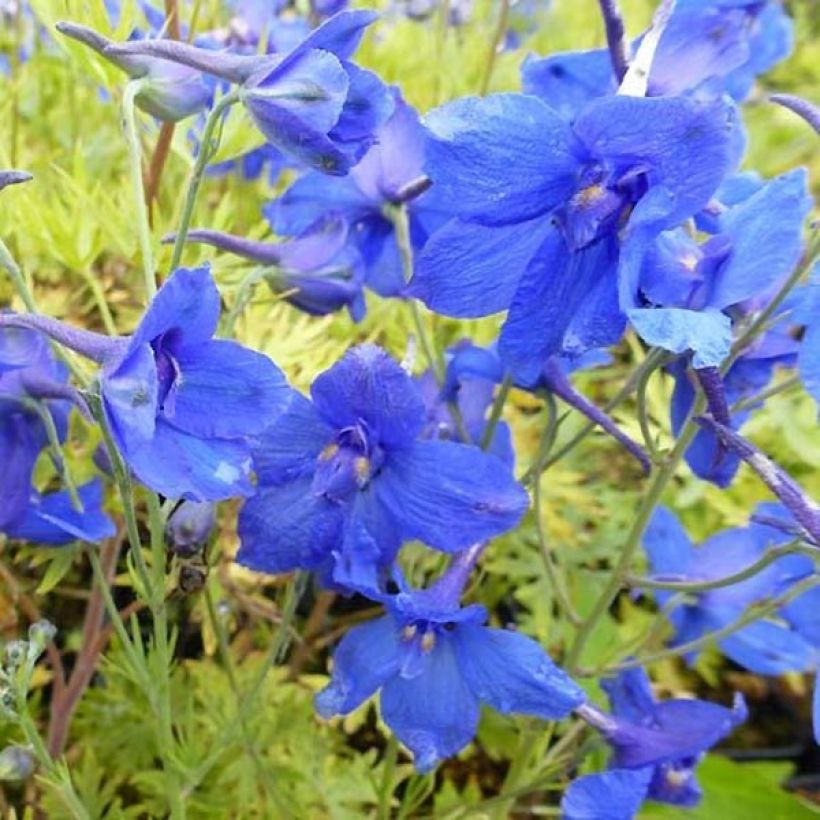

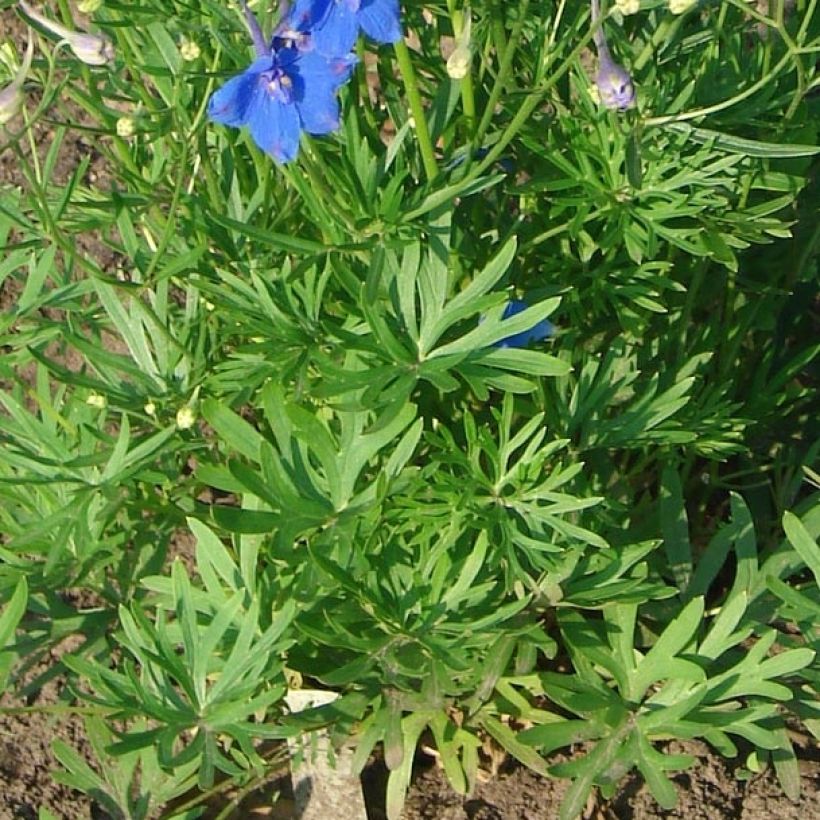

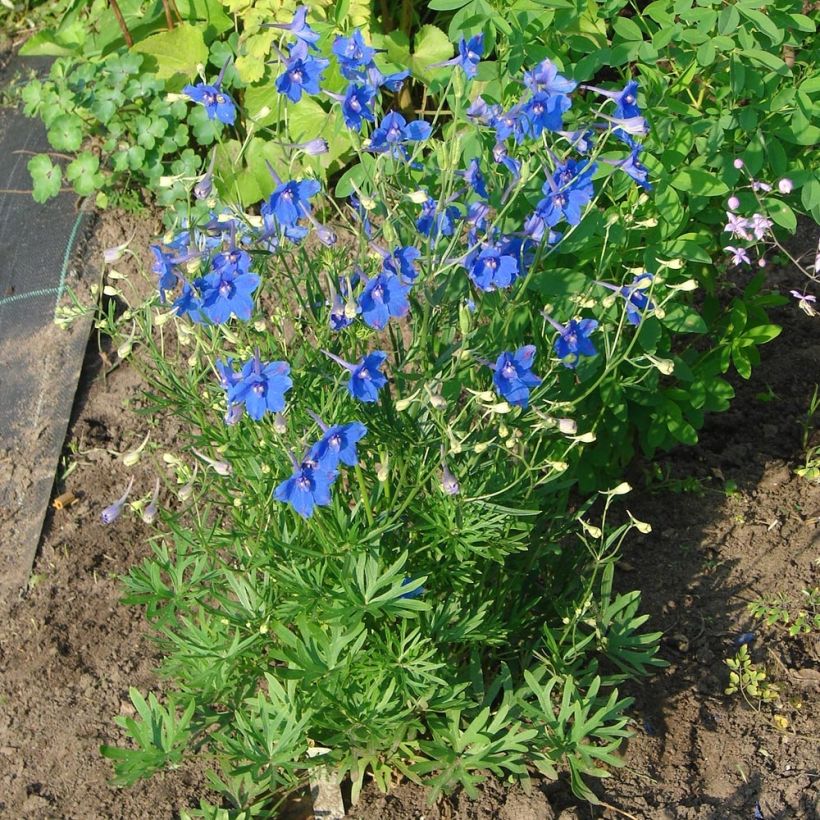

Flowering
Foliage
Plant habit
Safety measures
Botanical data
Delphinium
grandiflorum
Blauer Zwerg
Ranunculaceae
Siberian Larkspur, Chinese Delphinium
Cultivar or hybrid
ingestion
Cette plante est toxique si elle est ingérée volontairement ou involontairement.
Ne la plantez pas là où de jeunes enfants peuvent évoluer, et lavez-vous les mains après l'avoir manipulée.
Pensez à conserver l'étiquette de la plante, à la photographier ou à noter son nom, afin de faciliter le travail des professionnels de santé.
Davantage d'informations sur https://plantes-risque.info
Other Delphinium - Larkspur
View all →Planting and care
Delphiniums are fairly easy to grow but still require some precautions: they dislike heavy and damp soils, as well as dry and poor soils. The soil that suits them is fertile soil, rich in humus, loose, moist, even in summer, but without excess wet in winter, and shelter from strong winds. Under these conditions, they will live for many years. Beware of slugs and snails that can cause damage at the beginning of growth.
Planting period
Intended location
Care
Planting & care advice
-
, onOrder confirmed
Reply from on Promesse de fleurs
Similar products
Haven't found what you were looking for?
Hardiness is the lowest winter temperature a plant can endure without suffering serious damage or even dying. However, hardiness is affected by location (a sheltered area, such as a patio), protection (winter cover) and soil type (hardiness is improved by well-drained soil).

Photo Sharing Terms & Conditions
In order to encourage gardeners to interact and share their experiences, Promesse de fleurs offers various media enabling content to be uploaded onto its Site - in particular via the ‘Photo sharing’ module.
The User agrees to refrain from:
- Posting any content that is illegal, prejudicial, insulting, racist, inciteful to hatred, revisionist, contrary to public decency, that infringes on privacy or on the privacy rights of third parties, in particular the publicity rights of persons and goods, intellectual property rights, or the right to privacy.
- Submitting content on behalf of a third party;
- Impersonate the identity of a third party and/or publish any personal information about a third party;
In general, the User undertakes to refrain from any unethical behaviour.
All Content (in particular text, comments, files, images, photos, videos, creative works, etc.), which may be subject to property or intellectual property rights, image or other private rights, shall remain the property of the User, subject to the limited rights granted by the terms of the licence granted by Promesse de fleurs as stated below. Users are at liberty to publish or not to publish such Content on the Site, notably via the ‘Photo Sharing’ facility, and accept that this Content shall be made public and freely accessible, notably on the Internet.
Users further acknowledge, undertake to have ,and guarantee that they hold all necessary rights and permissions to publish such material on the Site, in particular with regard to the legislation in force pertaining to any privacy, property, intellectual property, image, or contractual rights, or rights of any other nature. By publishing such Content on the Site, Users acknowledge accepting full liability as publishers of the Content within the meaning of the law, and grant Promesse de fleurs, free of charge, an inclusive, worldwide licence for the said Content for the entire duration of its publication, including all reproduction, representation, up/downloading, displaying, performing, transmission, and storage rights.
Users also grant permission for their name to be linked to the Content and accept that this link may not always be made available.
By engaging in posting material, Users consent to their Content becoming automatically accessible on the Internet, in particular on other sites and/or blogs and/or web pages of the Promesse de fleurs site, including in particular social pages and the Promesse de fleurs catalogue.
Users may secure the removal of entrusted content free of charge by issuing a simple request via our contact form.
The flowering period indicated on our website applies to countries and regions located in USDA zone 8 (France, the United Kingdom, Ireland, the Netherlands, etc.)
It will vary according to where you live:
- In zones 9 to 10 (Italy, Spain, Greece, etc.), flowering will occur about 2 to 4 weeks earlier.
- In zones 6 to 7 (Germany, Poland, Slovenia, and lower mountainous regions), flowering will be delayed by 2 to 3 weeks.
- In zone 5 (Central Europe, Scandinavia), blooming will be delayed by 3 to 5 weeks.
In temperate climates, pruning of spring-flowering shrubs (forsythia, spireas, etc.) should be done just after flowering.
Pruning of summer-flowering shrubs (Indian Lilac, Perovskia, etc.) can be done in winter or spring.
In cold regions as well as with frost-sensitive plants, avoid pruning too early when severe frosts may still occur.
The planting period indicated on our website applies to countries and regions located in USDA zone 8 (France, United Kingdom, Ireland, Netherlands).
It will vary according to where you live:
- In Mediterranean zones (Marseille, Madrid, Milan, etc.), autumn and winter are the best planting periods.
- In continental zones (Strasbourg, Munich, Vienna, etc.), delay planting by 2 to 3 weeks in spring and bring it forward by 2 to 4 weeks in autumn.
- In mountainous regions (the Alps, Pyrenees, Carpathians, etc.), it is best to plant in late spring (May-June) or late summer (August-September).
The harvesting period indicated on our website applies to countries and regions in USDA zone 8 (France, England, Ireland, the Netherlands).
In colder areas (Scandinavia, Poland, Austria...) fruit and vegetable harvests are likely to be delayed by 3-4 weeks.
In warmer areas (Italy, Spain, Greece, etc.), harvesting will probably take place earlier, depending on weather conditions.
The sowing periods indicated on our website apply to countries and regions within USDA Zone 8 (France, UK, Ireland, Netherlands).
In colder areas (Scandinavia, Poland, Austria...), delay any outdoor sowing by 3-4 weeks, or sow under glass.
In warmer climes (Italy, Spain, Greece, etc.), bring outdoor sowing forward by a few weeks.






























